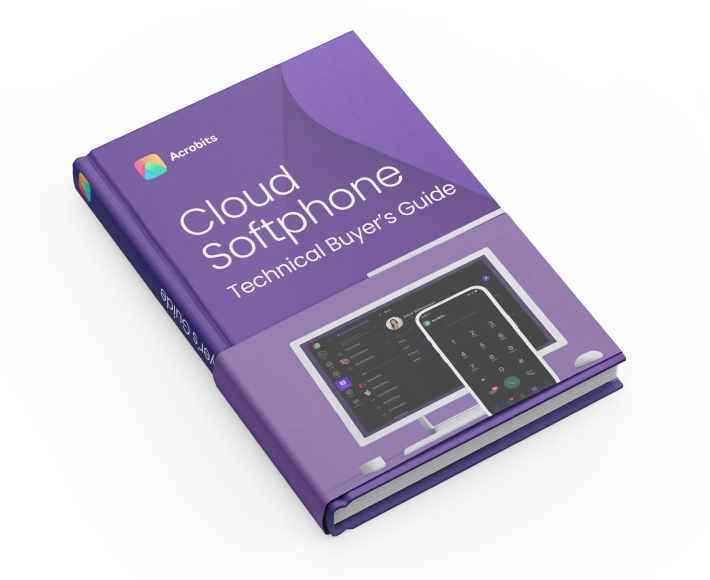SIP communications isn’t a new type of technology. It’s been around for well over a decade by now. So, why are SIP communications so popular within the business world?
Today – high-quality communications are the standard. Whether you’re a business or an individual, you expect nothing but the best when making a call.
Many companies are turning to Session Initiated Protocol (SIP) apps to accomplish this. Read on to learn more about SIP and how it enables essential functions for VoIP communications.
What is Session Initiation Protocol or SIP?
Session Initiation Protocol (SIP) is a flexible protocol used in VoIP platforms to initiate and manage call sessions. SIP is considered a call initiation protocol, but it can do much more than initiate voice calls. SIP also has enhanced functions that make it powerful throughout communications environments.
How does SIP work?
SIP, or Session Initiation Protocol, sets up and ends calls over the Internet by exchanging text-based messages. When you make a call, SIP arranges for your phone to connect to the other person’s phone.
First, it shares information like phone numbers to link the two phones. Then, once you’re done talking, SIP sends a message to end the call. It’s like a director for internet calls, making sure everyone connects and disconnects at the right times.
In both traditional and IP telephony, network engineers distinguish between two phases of a voice call:
- Call setup: This phase includes all the details necessary to connect two phones to each other.
- Data transfer: Once connected, the data transfer phase moves voice packets between the two endpoints.
SIP is classified as a call setup protocol that operates on the application layer. SIP was designed as a general-purpose protocol that enables real-time multimedia communication.
This vital protocol was designed for simplicity. SIP is text-based and modeled after HTTP’s response and request model. The text-based nature of the protocol enables easy debugging and reviewing of error logs.
Additionally, SIP can operate on IPv4 or IPv6 and can use either TCP or UDP. In most SIP Client applications, SIP uses IPv4 and UDP.
How does SIP Work on a Phone?
SIP on a phone uses an app to handle the backend work, making internet calls possible by connecting both parties with just an internet connection.
Internet telephony has simplified the way we communicate with each other. Long-distance calls are a thing of the past, thanks to the Internet. SIP phones can be implemented as either hardware or as a software phone, commonly called softphone.
You might also like:
What is a Softphone? The Complete 101 Guide
Acting as a middleman between you (the caller) and the person you are calling, your SIP app will handle the entire process so long as both parties have access to a stable Internet connection, all possible with a softphone app.
Here’s a brief explanation of the process in more relatable terms:
- You call a friend using your SIP phone. Just like a normal phone, you’ll hear ringing as you make the call.
- Your voice and video are converted into a series of encrypted data packets that are transferred to your recipient. Their SIP app receives the data, instructions on how to access it, and converts it into multimedia that they can hear. This entire process happens in milliseconds.
- When the call is terminated, the connection between you and your recipient is terminated as well.
In Summary

SIP is like a traffic director for internet calls, setting up and ending conversations by sharing necessary info like phone numbers.
It’s designed to be simple, using text messages to manage calls, which makes troubleshooting easier. Whether for voice or video, SIP ensures smooth communication across the web.
Clearing Up Terminology Around SIP
It’s also worth talking about some of the terms and acronyms you might hear when it comes to business-grade SIP communication.
- VoIP stands for Voice over Internet Protocol. The term encompasses any form of voice communication handled over the Internet, which includes SIP. SIP is essentially one way to enable VoIP in a business.
- Codecs are procedures that convert analog audio into digital signals or vice versa. A codec is used to convert a sender’s voice into data packets that can be sent over the Internet. Once received, the recipient uses a codec to convert the data back into an audio signal. Codecs come in many types and offer various compression levels depending on the audio quality a business needs.
- QoS stands for Quality of Service, which is a router setting that helps prioritize network traffic so that voice calls are always clear no matter what else the network is being used for.
What’s the Difference Between SIP & VoIP?
VoIP is the umbrella term for a collection of protocols, including SIP. SIP is the call setup protocol that enables other VoIP protocols.
VoIP and SIP may seem like competing technologies, but they are part of the same family of technologies enabling IP-based communications.
Because SIP is just a tool that enables an overall company collaboration platform, you will ultimately become familiar with it if you ever work with a Unified Communications as a Service provider.
The Five Major Functions of SIP
SIP handles several functions that make it a core protocol in VoIP services, understanding these 5 terms will give you the necessary tools to better understand the technology.
SIP needs flexibility and versatility to meet the demands of VoIP communications platforms. Engineers consider SIP to have five distinct significant functions:
- User location and registration: Endpoints leverage SIP proxies to register locations, and SIP uses this information to determine which endpoints will participate in a call, including video calls.
- Session management: SIP can terminate calls, transfer calls, or change call parameters, such as adding another user.
- Session setup: SIP is used to agree on specific session attributes used by both the called party and the calling party, including telling the called party’s endpoint that it needs to ring.
- User availability: Is the called party available to answer the call? SIP can tell the calling party that the user they’re calling is available or unavailable.
- User capabilities: SIP supports multimedia communication, so both endpoints must agree on the codec that needs to be used, such as the voice codec.
These functions are used throughout most VoIP calls to enable multimedia and dynamic communication.
SIP technology also enables SIP trunking, a service that allows on-premise PBX networks to connect to VoIP services for outbound calls rather than being restricted to traditional telephony networks. An in-depth look at this later.
Beyond Traditional Calling: How SIP Transforms Communication
That old phone you used nearly 15-20 years ago could make calls, maybe it had voicemail if you paid for it, and caller display. You also had to pay an insane amount of money to make long-distance calls. It was pretty basic and couldn’t do much.
What about today? Your smartphone is a sophisticated device that uses your Internet connection to seamlessly integrate web, email, instant messaging, and other services through your IP network. You can instantaneously call anyone from anywhere in the world for free.
SIP phones provide the architecture through a platform that makes all of this possible.
Today – everyone is using them. You may not know it, but your phone carrier has one integrated, apps like WhatsApp and Skype are SIP apps, many companies use them for communications, even creating their own custom solution with our white label VoIP softphone design tool, and many more are rushing to get their own internal SIP phones developed.
What Is SIP Trunking?
SIP trunking is a specific service that leverages SIP technology to connect traditional PBX (Private Branch Exchange) telephony networks to VoIP services.
It can be thought of as a virtualized version of analog phone lines, allowing on-premise PBX networks to interact with VoIP services and removing the dependence on traditional telephony services.
For a deeper dive into SIP Trunking check:
What is SIP Trunking, How it Works and 7 Business Benefits
When Was SIP Technology Invented?

SIP technology was originally invented by Mark Handley, Henning, Schulzrinne, Eve Schooler, and Jonathan Rosenberg in 1996. The technology itself was standardized as RFC 2543.
By 2000, it was accepted as a 3GPP signaling protocol for IP Multimedia Subsystems (IMS) architecture for IP-based streaming in cellular networks.
While today SIP technology is widely used in the telecom industry, it started as a practical solution for IP-based communications. In the early days, it was used for things like:
- Video conferencing
- Streaming media
- File transfer
- Internet fax
- Instant messaging
- Online gaming
Why Should My Business Switch to VoIP through SIP?
The average VoIP app on the market is capable of making calls but doesn’t do enough to personalize the communications experience.
What are the Benefits of SIP
One of the major SIP trends is to empower businesses with several meaningful benefits that are often attributed to VoIP, but are actually enabled by SIP. Some of these benefits include:
- Easily scalable: SIP systems are entirely Internet-based. As broadband has penetrated most of the world and fiber optic cables have replaced copper wires, SIP can scale as needed to meet the demands of large enterprises and small businesses alike.
- Cross-device compatibility: Since SIP works over the Internet, it can operate on mobile devices, laptops, desktops, and tablets. Employees can use any device they need, and SIP will dynamically understand which device needs to ring when receiving a call.
- Baked-in redundancy for reliability: If a traditional telephony network has an outage, there generally isn’t any redundancy, and businesses need to wait for the network to undergo repairs. Conversely, SIP calling leverages geo-redundant cloud-computing technology for substantially improved reliability. This redundancy provides improved reliability for VoIP services over traditional telephony services.
SIP is a core protocol in VoIP that enables many of the advanced features that have led VoIP communications to the forefront of modern business communications.
Bring the Future of SIP Modern Communications Today, not Tomorrow
White-label SIP phones are capable of personalizing and customizing your real-time communications experience. This means more flexibility, more cost savings, and the ability to include the features that matter the most to you.
The right SIP app will save your business a lot of time and money, improve employee productivity, let you tap into detailed mobile analytics, and provide a seamless communications experience.
Want to learn more about our White-label SIP platform? Talk to our team today!







